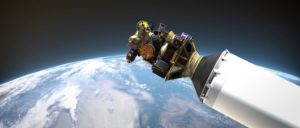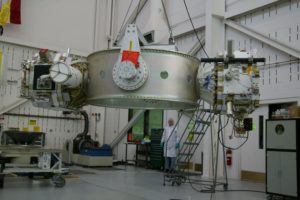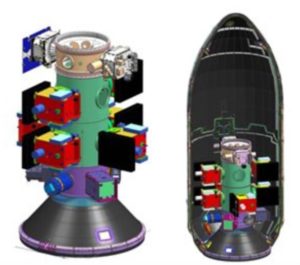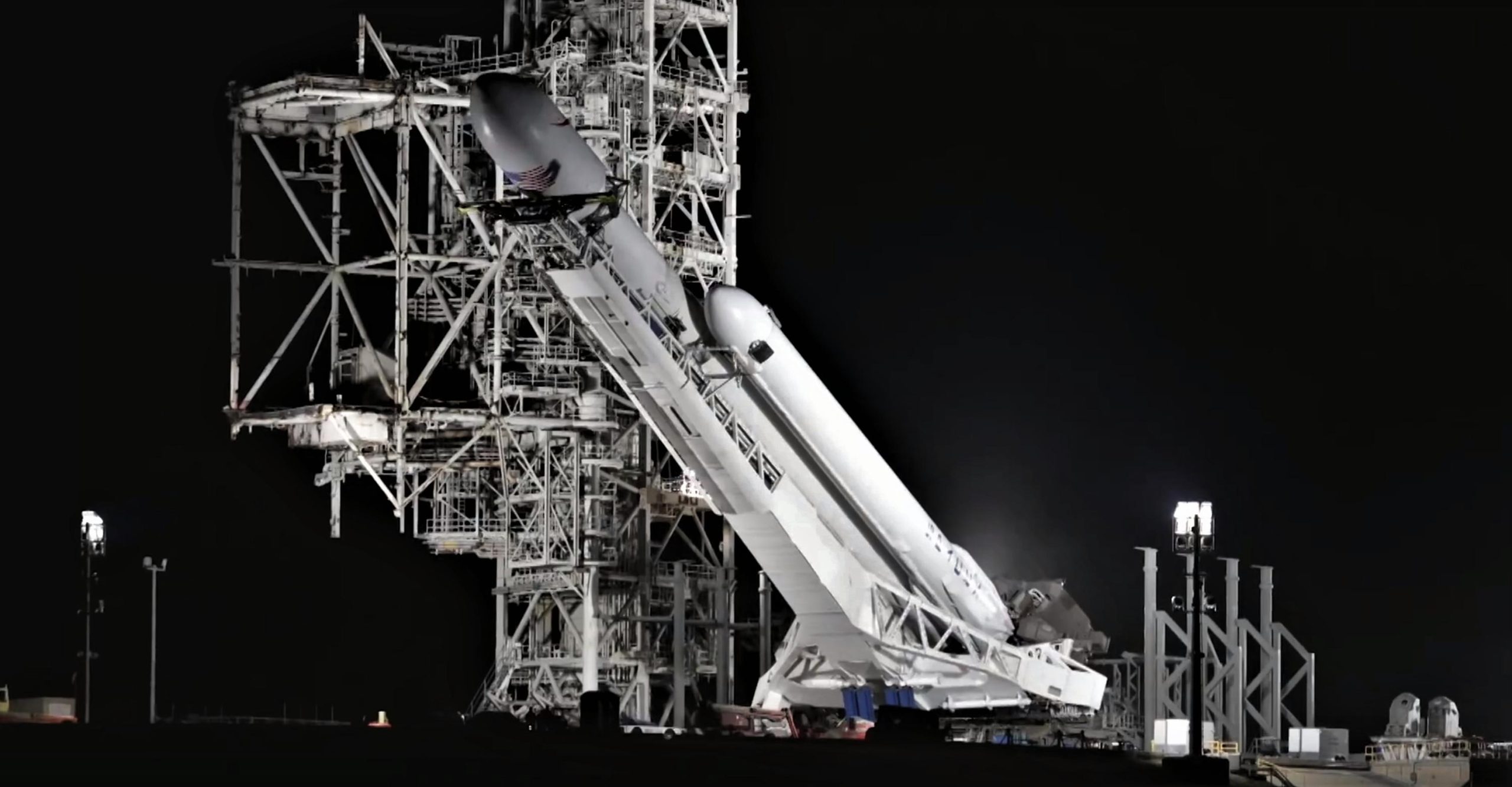
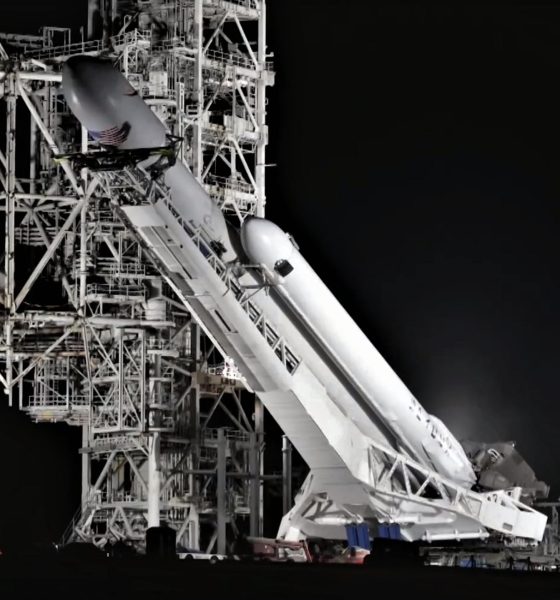
News
SpaceX’s first government Falcon Heavy launch aiming for “early 2019” per USAF
Linked to the rocket and mission through its own LightSail 2 solar sail satellite, The Planetary Society reports that the USAF and SpaceX are now targeting Falcon Heavy’s first launch for a government customer in “early 2019”.
Previously expected to launch around November 30th, just a month from today, it’s clear that SpaceX’s second Falcon Heavy rocket has yet to approach flight readiness, likely marginalized by a more pressing focus on near-term Falcon 9 missions and Crew Dragon’s imminent flight debuts.
LightSail 2 launch pushed to early 2019
An Air Force official says an ‘initial launch capability’ is being reassessed: https://t.co/QYA6NFPP1I pic.twitter.com/RJclLvcbSs
— Planetary Society (@exploreplanets) October 29, 2018
According to Planetary Society, a USAF official provided an update – per the group’s involvement in its STP-2 rideshare launch – stating that its “initial launch capability” was being reassessed, essentially a roundabout way of saying “A new launch date is being determined”. Reasons for the multitude of delays since Falcon Heavy’s successful February 2018 debut are few and far between, with the most likely explanation being some combination of issues with one or several of the ~25 satellites manifested and SpaceX’s ability to build a new Falcon Heavy rocket in time.
However, it’s decidedly ambiguous as to which one of those explanations truly takes precedence, given that SpaceX apparently told the USAF and its customers that it was ready to launch the mission between June and August.
“Officials working on the mission said SpaceX has provided the Air Force and other customers a 60-day window for launch opening on June 13. The Air Force spokesperson confirmed it will be the second Falcon Heavy mission.” – Stephen Clark, SpaceflightNow
Assuming SpaceX’s launch readiness announcement was accurate, the USAF and its customers must have run into some extreme issues while organizing all STP-2 payloads and integrating those satellites onto a custom-built adapter, a task that companies like Spaceflight Industries have shown to often be the long pole of rideshare launches. It’s also possible that SpaceX executives and managers underestimated or undersold the challenge of moving from a Falcon Heavy built solely on old Falcon 9 Block 2 and 3 boosters to an all-Block 5 version of the rocket, featuring a large number of highly-consequential changes like uprated engines and an entirely new approach to assembling each booster’s octaweb.
- Spaceflight’s SSO-A rideshare mission is quite similar to STP-2, albeit with more satellites on the smaller side. (Spaceflight)
- One group of STP-2 passengers, known as DSX, has been awaiting launch for more than eight years. (USAF)
- SpaceX’s second Falcon Heavy launch will either be the USAF’s STP-2, a collection of smaller satellites, or Arabsat 6A, a large communications satellite. (USAF)
Lastly, depending on the nature of the launch contract between them, it’s possible that SpaceX had been planning on reflying Falcon 9 Block 5 boosters as its next Falcon Heavy’s side boosters, a move that would dramatically shorten the lead time required for a new Falcon Heavy to be produced. If the USAF expects or has unconditionally demanded all-new hardware for the launch of STP-2, SpaceX would need at least two (if not three) times the production resources to build and test Falcon Heavy #2, all while paralyzing those resources until well after the rocket’s first flight.
Building three separate Falcon 9/Heavy boosters, acceptance-testing them in Texas, and delivering them to Florida – all under uniquely strict USAF standards – would likely take SpaceX a bare minimum of four months from start to finish. In the guaranteed event that SpaceX had to simultaneously continue regular production, test operations, and preparations for Crew Dragon launches, an all-new Falcon Heavy would likely take more than 6-8 months to make flight-ready while still allowing SpaceX to avoid severe launch delays for its many other customers.
- The communications satellite Arabsat-6A. (Lockheed Martin)
- Falcon Heavy’s side boosters seconds away from near-simultaneous landings at Landing Zones 1 and 2. (SpaceX)
To add additional confusion to the mix, multiple reliable sources have confirmed that STP-2’s actual launch target is closer to March 2019, quite a stretch for “early 2019”. At the same time, Falcon Heavy customer Arabsat has reported that its Arabsat 6A satellite is expected to launch as early as January 2019. Ultimately, clarity can only come from the USAF, Arabsat, or SpaceX itself – for now, we wait.
For prompt updates, on-the-ground perspectives, and unique glimpses of SpaceX’s rocket recovery fleet check out our brand new LaunchPad and LandingZone newsletters!

News
Elon Musk’s Grok AI to be used in U.S. War Department’s bespoke AI platform
The partnership aims to provide advanced capabilities to 3 million military and civilian personnel.

The U.S. Department of War announced Monday an agreement with Elon Musk’s xAI to embed the company’s frontier artificial intelligence systems, powered by the Grok family of models, into the department’s bespoke AI platform GenAI.mil.
The partnership aims to provide advanced capabilities to 3 million military and civilian personnel, with initial deployment targeted for early 2026 at Impact Level 5 (IL5) for secure handling of Controlled Unclassified Information.
xAI Integration
As noted by the War Department’s press release, GenAI.mil, its bespoke AI platform, will gain xAI for the Government’s suite of tools, which enable real-time global insights from the X platform for “decisive information advantage.” The rollout builds on xAI’s July launch of products for U.S. government customers, including federal, state, local, and national security use cases.
“Targeted for initial deployment in early 2026, this integration will allow all military and civilian personnel to use xAI’s capabilities at Impact Level 5 (IL5), enabling the secure handling of Controlled Unclassified Information (CUI) in daily workflows. Users will also gain access to real‑time global insights from the X platform, providing War Department personnel with a decisive information advantage,” the Department of War wrote in a press release.
Strategic advantages
The deal marks another step in the Department of War’s efforts to use cutting-edge AI in its operations. xAI, for its part, highlighted that its tools can support administrative tasks at the federal, state and local levels, as well as “critical mission use cases” at the front line of military operations.
“The War Department will continue scaling an AI ecosystem built for speed, security, and decision superiority. Newly IL5-certified capabilities will empower every aspect of the Department’s workforce, turning AI into a daily operational asset. This announcement marks another milestone in America’s AI revolution, and the War Department is driving that momentum forward,” the War Department noted.
News
Tesla FSD (Supervised) v14.2.2 starts rolling out
The update focuses on smoother real-world performance, better obstacle awareness, and precise end-of-trip routing, among other improvements.

Tesla has started rolling out Full Self-Driving (Supervised) v14.2.2, bringing further refinements to its most advanced driver-assist system. The new FSD update focuses on smoother real-world performance, better obstacle awareness, and precise end-of-trip routing, among other improvements.
Key FSD v14.2.2 improvements
As noted by Not a Tesla App, FSD v14.2.2 upgrades the vision encoder neural network with higher resolution features, enhancing detection of emergency vehicles, road obstacles, and human gestures. New Arrival Options let users select preferred drop-off styles, such as Parking Lot, Street, Driveway, Parking Garage, or Curbside, with the navigation pin automatically adjusting to the user’s ideal spot for precision.
Other additions include pulling over for emergency vehicles, real-time vision-based detours for blocked roads, improved gate and debris handling, and extreme Speed Profiles for customized driving styles. Reliability gains cover fault recovery, residue alerts on the windshield, and automatic narrow-field camera washing for new 2026 Model Y units.
FSD v14.2.2 also boosts unprotected turns, lane changes, cut-ins, and school bus scenarios, among other things. Tesla also noted that users’ FSD statistics will be saved under Controls > Autopilot, which should help drivers easily view how much they are using FSD in their daily drives.
Key FSD v14.2.2 release notes
Full Self-Driving (Supervised) v14.2.2 includes:
- Upgraded the neural network vision encoder, leveraging higher resolution features to further improve scenarios like handling emergency vehicles, obstacles on the road, and human gestures.
- Added Arrival Options for you to select where FSD should park: in a Parking Lot, on the Street, in a Driveway, in a Parking Garage, or at the Curbside.
- Added handling to pull over or yield for emergency vehicles (e.g. police cars, fire trucks, ambulances).
- Added navigation and routing into the vision-based neural network for real-time handling of blocked roads and detours.
- Added additional Speed Profile to further customize driving style preference.
- Improved handling for static and dynamic gates.
- Improved offsetting for road debris (e.g. tires, tree branches, boxes).
- Improve handling of several scenarios, including unprotected turns, lane changes, vehicle cut-ins, and school buses.
- Improved FSD’s ability to manage system faults and recover smoothly from degraded operation for enhanced reliability.
- Added alerting for residue build-up on interior windshield that may impact front camera visibility. If affected, visit Service for cleaning!
- Added automatic narrow field washing to provide rapid and efficient front camera self-cleaning, and optimize aerodynamics wash at higher vehicle speed.
- Camera visibility can lead to increased attention monitoring sensitivity.
Upcoming Improvements:
- Overall smoothness and sentience.
- Parking spot selection and parking quality.
News
Tesla is not sparing any expense in ensuring the Cybercab is safe
Images shared by the longtime watcher showed 16 Cybercab prototypes parked near Giga Texas’ dedicated crash test facility.

The Tesla Cybercab could very well be the safest taxi on the road when it is released and deployed for public use. This was, at least, hinted at by the intensive safety tests that Tesla seems to be putting the autonomous two-seater through at its Giga Texas crash test facility.
Intensive crash tests
As per recent images from longtime Giga Texas watcher and drone operator Joe Tegtmeyer, Tesla seems to be very busy crash testing Cybercab units. Images shared by the longtime watcher showed 16 Cybercab prototypes parked near Giga Texas’ dedicated crash test facility just before the holidays.
Tegtmeyer’s aerial photos showed the prototypes clustered outside the factory’s testing building. Some uncovered Cybercabs showed notable damage and one even had its airbags engaged. With Cybercab production expected to start in about 130 days, it appears that Tesla is very busy ensuring that its autonomous two-seater ends up becoming the safest taxi on public roads.
Prioritizing safety
With no human driver controls, the Cybercab demands exceptional active and passive safety systems to protect occupants in any scenario. Considering Tesla’s reputation, it is then understandable that the company seems to be sparing no expense in ensuring that the Cybercab is as safe as possible.
Tesla’s focus on safety was recently highlighted when the Cybertruck achieved a Top Safety Pick+ rating from the Insurance Institute for Highway Safety (IIHS). This was a notable victory for the Cybertruck as critics have long claimed that the vehicle will be one of, if not the, most unsafe truck on the road due to its appearance. The vehicle’s Top Safety Pick+ rating, if any, simply proved that Tesla never neglects to make its cars as safe as possible, and that definitely includes the Cybercab.
